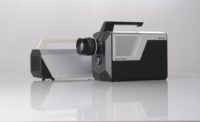Back to Basics: Detecting Heavy Metals Using X-Ray Fluorescence
Beginner tips to understand the role XRF plays in restricting hazardous materials.

X-Ray Fluorescence analysis plays an important role in protecting consumers by detecting possible toxic heavy metals in electronics, automobiles and medical devices before they make it to market.
The potential risks extend beyond components’ useful lives, as toxins can pollute landfills and potentially cause health issues to people having prolonged exposure to such materials. In Europe, the Waste Electrical and Electronic Equipment (WEEE) directive stipulates the treatment, recovery, and recycling of electrical and electronic equipment. But, of course, this process is safer if hazardous materials are restricted in the first place.
Regulations like Europe’s ELV (End-of-Life Vehicle) Directive, and RoHS (Restriction of Hazardous Substances in Electrical and Electronic Equipment), require manufacturers to ensure that parts don’t exceed the maximum levels of the toxic elements. ELV restricts cadmium, lead, mercury, and Hexavalent chromium, as does RoHS, with the addition of two kinds of brominated flame retardants—polybrominated biphenyl (PBB) and polybrominated diphenyl ether (PBDE).
Medical devices and monitoring and control instruments were also later included in the RoHS directive that covers large and small household appliances, IT and telecommunications equipment, consumer equipment, lighting equipment, electrical and electronic tools, toys, leisure and sports equipment, and automatic dispensers.
Levels of each of the restricted materials are capped at 1,000 ppm, with the exception of Cadmium, which is limited to 100 ppm.
The U.S. does not have a parallel, nationwide law, but several states including California, New Jersey, and Minnesota have regulations that mimic the RoHS directive. For instance, certain covered electronic devices, if prohibited in the EU due to an excessive level of a heavy metal, may be prohibited for sale in a specific state. The states vary so reviewing each guideline is important for manufacturers, according to experts at Shimadzu.
In 2015, four phthalate esters—DEHP, DBP, BBP and DIBP—were added to RoHS’s list of restricted materials. Phthalate esters cannot be detected by conventional X-ray fluorescence screening, according to information provided by Shimadzu, “so it is now an urgent necessity to establish screening methods for restricted organic substances and accurate analysis methods for phthalate esters.”
“Later, it will be necessary to pay attention to trends in the creation of test methods, and to conduct fact-finding surveys with respect to procurement items.”
For parts that may contain phthalate esters, Shimadzu offers secondary screening technology, such as Pyrolysis gas chromatography mass spectrometry, to catch the organic matter.
Using XRF to Meet ELV and RoHS Requirements
Both benchtop and handheld XRF analyzers are used; however, handheld devices are by far the primary tool for initial screening, according to Shimadzu.
“They can quickly and efficiently screen for banned elements in real time, allowing users to get results instantly,” according to Shimadzu experts. “This saves significant time. However, benchtop analyzers are more accurate and offer greater detection limits. These can be used to confirm handheld screening results, something many manufacturers should consider due to the potential ramifications of producing goods with these hazardous elements in them.”
In a typical analysis scenario, an XRF analyzer screens for the elements—if the item falls within the specified limits, and no additional testing is warranted, the sample conforms and is considered as passing. If it doesn’t pass, more testing is needed. In this instance, analysis techniques used may include benchtop XRF spectrometry, UV-Vis spectroscopy, gas chromatography mass spectrometry (GCMS), and inductively coupled plasma mass spectrometry (ICP-MS). It varies according to the substance being analyzed, such as hexavalent chromium or mercury, and the type of material, such as a polymer or metal, according to Shimadzu.
“The value of appropriate, properly performed testing is that it provides objective, quantitative data showing that the materials, components, or products in question either do or do not contain levels of restricted substances above the regulatory limits,” according to experts at Shimadzu. “Analytical instruments and the specific techniques/methods used (when followed properly) can give assurance to manufacturers that their products—and their business—will not be affected by the directive. If nothing else, the testing and appropriate record keeping ensures that ‘due diligence’ was followed.”
General XRF Principles
In X-Ray Fluorescence Spectrometry, a sample is irradiated with x-rays. The energy level and intensity of second-order x-rays (x-ray fluorescence) generated from the samples are measured, according to Shimadzu. This allows non-destructive measuring of the constituent elements (qualitative analysis) and their respective concentration levels (quantitative analysis). “Since no chemical pretreatment is required and multiple elements can be analyzed simultaneously, analysis can be performed rapidly, which is a major benefit of x-ray fluorescence,” according to information provided by Shimadzu. “In addition, systems are compact, require minimal maintenance, and are able to measure samples of any shape by simply placing them in the measurement chamber. Consequently, EDX systems are ideal for acceptance inspection, production screening analysis and defect analysis.”
Looking for a reprint of this article?
From high-res PDFs to custom plaques, order your copy today!





